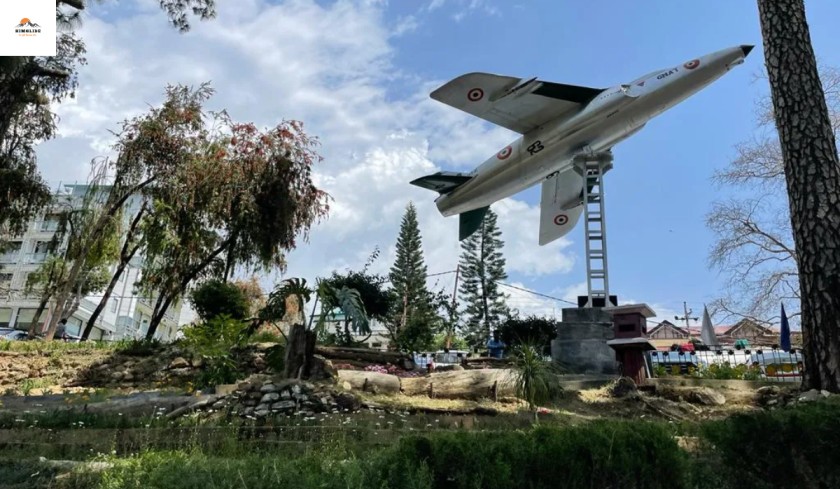In the remote and culturally rich land of Kinnaur district in Himachal Pradesh, a unique celebration unfolds each year—Phulaich Festival, also known as the Ukhyang Festival. This rare and vibrant celebration blends the beauty of wild Himalayan flowers, ancestral worship, community bonding, and traditional music and dance, offering a window into the deep-rooted spiritual and ecological harmony of the Kinnauri people.
Let’s explore the Phulaich Festival Himachal, its history, rituals, where and how it’s celebrated, and why it remains a hidden cultural treasure of the Indian Himalayas.
What is the Phulaich Festival?
Phulaich, also known locally as Ukyang or Ookhayang, is a flower festival celebrated in the month of Bhadrapada (August–September) in the Kinnaur region of Himachal Pradesh, particularly in village communities like Kalpa, Morang, and Kanam.
The festival is centered around:
- The gathering of wildflowers from high-altitude pastures.
- Offerings to local deities and ancestral spirits.
- Traditional music, dance, and feasting.
- A symbolic hunt and parade of warriors.
Phulaich is not just a floral celebration; it’s a spiritual journey into the identity of the Kinnauri people, their relationship with nature, and their ancestral pride.
Also Read: Bhunda Maha Yagya – The Mythical Ritual Festival of Himachal Pradesh
Where is Phulaich Celebrated in Himachal?
Phulaich Festival is primarily celebrated in the Kinnaur district, specifically in:
- Kalpa
- Morang
- Kanam
- Pangi
- Chini
These villages, perched among the majestic Himalayan peaks, transform into centers of devotion, culture, and joy during the festival.
The Flower Gathering Ritual – Nature Meets Devotion
The festival begins with a flower gathering ceremony, where selected men from each village ascend the alpine meadows and forests to collect seasonal wildflowers. These flowers are believed to be sacred offerings to the deities and spirits of ancestors.
This part of the ritual connects the Kinnauri people with Mother Nature, reaffirming their dependence on and respect for the natural world.
The collected flowers are then:
- Brought back in a ceremonial procession.
- Decorated around the local devta temples.
- Offered in sacred rituals and prayers.
Ancestral Worship and the Role of the Devta
One of the core spiritual aspects of Phulaich is remembering and honoring the departed souls of the village. Community members gather in temples and family homes to:
- Light lamps and incense.
- Offer flowers and seasonal produce.
- Pray to the village deity (devta), who is the guardian of traditions and the bridge to ancestors.
Each village has its own Devta Committee, responsible for maintaining temple customs and organizing Phulaich rituals. The devta palanquin is brought out in full grandeur, accompanied by traditional instruments, dancers, and villagers in ceremonial attire.
The Symbolic Hunt – Warrior Spirit of Kinnaur
An iconic part of the Phulaich Festival in Himachal is the mock hunt performed by men dressed in warrior costumes, carrying swords and shields. This symbolic hunt represents the martial history of the region, a tribute to their warrior ancestors who once protected the valleys.
While no actual animals are harmed, the procession features:
- Mock battles.
- Roaring war cries.
- The march of the brave around the village and temple courtyards.
It adds a sense of drama, history, and pride to the entire celebration.
Cultural Performances – Songs, Dances & Community Feasts
Phulaich isn’t complete without the festive community gathering where people:
- Wear their traditional Kinnauri woolen attire.
- Dance to the rhythm of narsingha (horns) and drums.
- Sing folk songs narrating tales of gods, nature, and valor.
The village courtyard or temple ground becomes the hub of:
- Kinnauri folk dances (e.g., Shand & Kayang)
- Community feasting on local delicacies and home-brewed chhang (millet beer)
- Exchanges of flowers, sweets, and seasonal produce.
This is a time of communal bonding, where even outsiders and tourists are welcomed warmly.
When is Phulaich Celebrated?
The Phulaich Festival is celebrated every year in the second half of September, usually around September 15 to 25, based on the traditional Hindu lunar calendar. The exact dates vary from village to village.
If you’re planning to attend, it’s best to check the local devta schedule or panchang and connect with villagers or local tourism offices in Reckong Peo or Kalpa.
How to Reach Kinnaur for Phulaich Festival
1. By Road:
- From Shimla, drive to Kalpa or Reckong Peo (around 230 km / 8–10 hours).
- Taxis and HRTC buses are available regularly from Rampur, Sangla, and Sarahan.
2. By Train:
- Nearest railhead: Shimla Railway Station (Toy Train via Kalka).
- From Shimla, travel by road to Kinnaur.
3. By Air:
- Nearest airport: Shimla Airport (Jubbarhatti) or Bhuntar (Kullu).
- Further journey by taxi or bus to Kinnaur.
Why You Should Attend the Phulaich Festival
- Experience a rare, untouched cultural event.
- Witness pure Himalayan traditions that haven’t been commercialized.
- Be part of a spiritual, eco-friendly, and community-centric celebration.
- Explore the breathtaking landscapes of Kinnaur during the post-monsoon bloom.
Phulaich is more than a festival—it’s an emotion, a ritual of remembrance, and a celebration of life in harmony with nature.
Final Thoughts
If you’re a traveler, culture lover, or someone seeking authentic Himalayan experiences, witnessing the Phulaich Festival Himachal is an unforgettable journey. It’s not just about colors and flowers—it’s about identity, legacy, and harmony with the divine and the natural world.
FAQ’s
What is the Phulaich Festival famous for?
Phulaich Festival is famous for its floral offerings, ancestral worship, symbolic warrior hunt, and traditional Kinnauri cultural performances.
When is the Phulaich Festival held?
It is held in the month of Bhadrapada (September), usually around 15th to 25th September, in the Kinnaur district of Himachal Pradesh.
Where is Phulaich Festival celebrated in Himachal Pradesh?
The festival is mainly celebrated in Kalpa, Morang, Kanam, and surrounding villages in Kinnaur.
Can tourists attend the Phulaich Festival?
Yes, tourists are welcomed by the locals, but it’s advised to respect local customs and dress modestly.
What should I carry while visiting during Phulaich?
Carry warm clothes, camera, cash, respectful attire, and if possible, gifts like sweets or fruits as goodwill offerings.







